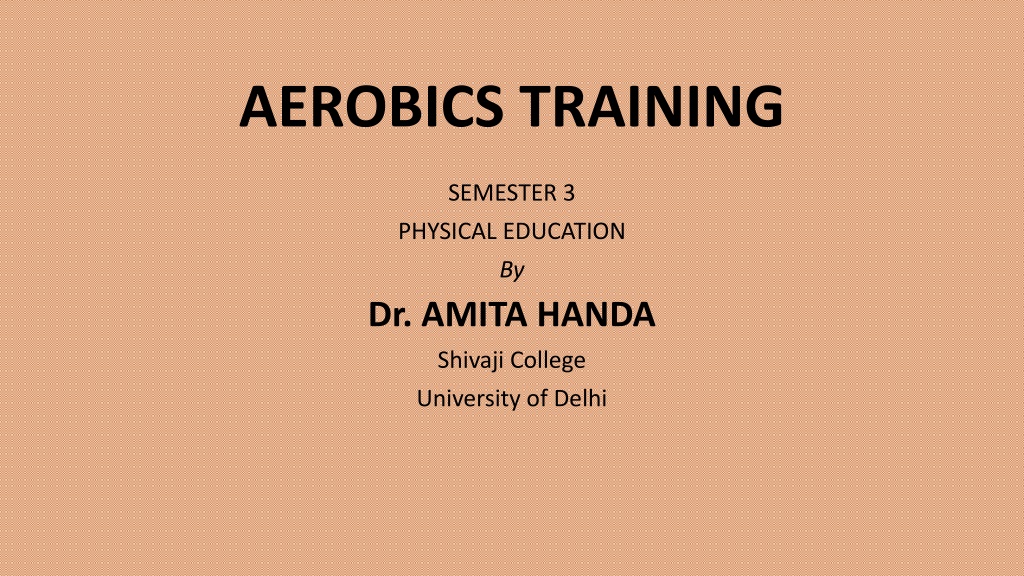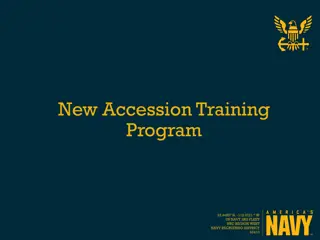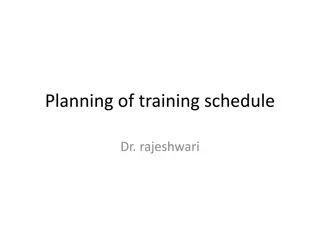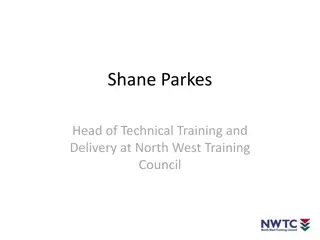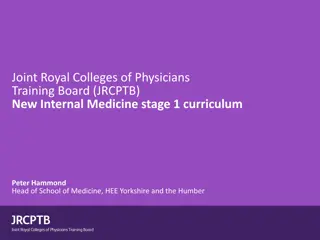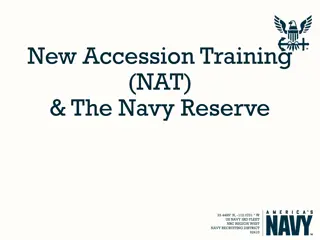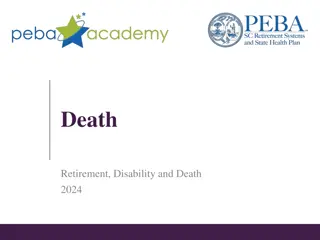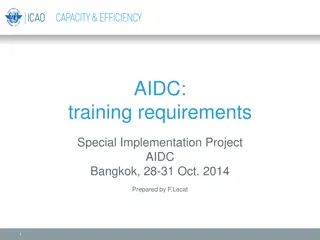Aerobics Training: Introduction, Benefits, and Types by Dr. Amita Handa
Join Dr. Amita Handa's Semester 3 Physical Education course on Aerobics Training at Shivaji College, University of Delhi, to learn about the introduction, benefits, and different types of aerobics. Explore the evolution of aerobics, individualized and group training methods, and the impact on overall fitness and cardiovascular health. Discover low impact and high impact aerobics, aqua aerobics, step aerobics, and more. Improve blood circulation, increase energy, boost endurance, and reduce the risk of heart disease and other lifestyle-related conditions. Achieve a healthier weight, reduce stress, anxiety, and depression, enhance sleep quality, activate the immune system, and build muscular strength and flexibility.
Download Presentation

Please find below an Image/Link to download the presentation.
The content on the website is provided AS IS for your information and personal use only. It may not be sold, licensed, or shared on other websites without obtaining consent from the author. Download presentation by click this link. If you encounter any issues during the download, it is possible that the publisher has removed the file from their server.
E N D
Presentation Transcript
AEROBICS TRAINING SEMESTER 3 PHYSICAL EDUCATION By Dr. AMITA HANDA Shivaji College University of Delhi
UNIT 1: INTRODUCTION INTRODUCTION TO AEROBICS BENEFITS OF PARTICIPATION IN AEROBICS EVOLUTION OF AEROBICS INDIVIDUALIZED AND GROUP TRAINING IN AEROBICS Dr.Amita Handa
AEROBICS: INTRODUCTION Aerobic means in the presence of oxygen. low to moderate level of exercise and can be sustained over long periods. Improving all elements of fitness . It strengthens the heart and lungs and trains the cardiovascular system. Is rhythmic in nature. Examples are walking, jogging, running, cycling, rowing, cross-country skiing, skipping and hiking. Dr.Amita Handa
DEFINITION OF AEROBICS Any of various sustained exercises, as jogging, rowing, swimming, or cycling, that stimulate and strengthen the heart and lungs, thereby improving the body's utilization of oxygen. The use of oxygen to adequately meet energy demands during exercise. Is a form of physical exercise that combines rhythmic exercise with stretching and strength training routines with the goal of improving all elements of fitness (flexibility, muscular strength, and cardio- vascular fitness). Dr.Amita Handa
KIND OF AEROBICS Low Impact Aerobics: At least one foot stays in contact with the ground at all times ,Recommended for one with health issues, works the body's muscles and increases heart rate, without the additional strain to your joints. High Impact Aerobics: Improve fitness component & skill. both the feet leave the ground, can put stress on your bones and joints Others: Aqua/water Aerobics, step Aerobics, weight Aerobics, Floor Aerobics. Dr.Amita Handa
IMAGES OF AEROBIC EXERCISE Dr.Amita Handa
BENEFIT OF AEROBICS Improves blood circulation and helps the body use oxygen better. Increases energy. Increases endurance. Helps reduce the risk of developing heart disease. Helps reduce the risk of developing other lifestyles diseases. Dr.Amita Handa
BENEFIT OF AEROBICS Maintain a healthy weight. Helps reduce stress, tension, anxiety, and depression. Improves sleep. Activates immune system. Builds the muscular strength and makes your body more flexible. Dr.Amita Handa
EVOLUTION OF AEROBICS Dr. Kenneth H. Cooper( 1968), published his book Aerobics in USA. Dr.Amita Handa
EVOLUTION OF AEROBICS Jazzercise (1969) Judi Sheppard Missett founded the dance-based fitness program. Its franchise continues to grow today. Dr.Amita Handa
EVOLUTION OF AEROBICS Aerobics Dance by Jacki Sorensen (1970s) Aerobics fitness studio by Richard Simmons (1970s) Dr.Amita Handa
EVOLUTION OF AEROBICS Workout exercise by Jane Fonda (1982) Aerobics gained worldwide popularity after the release of her exercise videos in 1982. Dr.Amita Handa
EVOLUTION OF AEROBICS Step Aerobics by Gin Miller (1980s) Dr.Amita Handa
EVOLUTION OF AEROBICS Tae Bo by Billy Blanks (1990s):a new cardio-boxing aerobic exercise effective for weight loss. Pilates by Joseph Pilates in Germany (1990s) Swiss (Stability) Ball (1990s) by an Italian plastics manufacturer, Aquilino Casani. First world championships at San Diego in March 1990. Dr.Amita Handa
EVOLUTION OF AEROBICS: IMAGES Cardio-boxing aerobic exercise: Dr.Amita Handa
EVOLUTION OF AEROBICS: IMAGES Pilates: Dr.Amita Handa
EVOLUTION OF AEROBICS: IMAGES Swiss (Stability) Ball Exercise: Dr.Amita Handa
EVOLUTION OF AEROBICS Zumba (1999)in Columbia by Albert Beto Perez. Dr.Amita Handa
EVOLUTION OF AEROBICS 21st Century Aerobics oCompetitive/ sports aerobics came into existence. oImproved with technology. Dr.Amita Handa
Training in Aerobics Types of training in Aerobics: oIndividual training oGroup Training Training in Aerobics is characterized by : osetting objectives o teaching content based on these objectives. o evaluating performance. Dr.Amita Handa
INDIVIDUALIZED TRAINING IN AEROBICS INTRODUCTION Personalized supervision from your trainer. Is a specialist and will cater to specific needs. personal trainers to have credible certifications. Quickly and effectively getting into shape. Think of it only when you have some serious fitness goals to achieve. Effective if suffering from an injury or a delicate health condition. Dr.Amita Handa
INDIVIDUALIZED TRAINING IN AEROBICS The advantages are: oDesired time oDesired pace oSelf-discipline oHealthy lifestyle olearning styles oTake less time to get a proper workout in. oClose supervision and safety. o More Concentration Dr.Amita Handa
INDIVIDUALIZED TRAINING IN AEROBICS The disadvantages are: oExcuses oFeedback oFun factor oThere is a long lead time to prepare materials. oLack of external motivation. oThe trainer s role needs to change. Dr.Amita Handa
INDIVIDUALIZED TRAINING IMAGES Dr.Amita Handa
GROUP TRAINING IN AEROBICS INTRODUCTION oworks when groups are smaller. oIneffective in large groups. oInfrastructure. oMusic selection. oCoach decides the sequence of workout. oFixed timing. oFixed Pace Dr.Amita Handa
GROUP TRAINING IN AEROBICS Advantages are: oFeedback oImpulses oResponsibility oStructured Planning oversatility oIt can be a pleasant, fulfilling experience. oMotivation and encouragement. othere is a sense of moral support. Dr.Amita Handa
GROUP TRAINING IN AEROBICS Disadvantages are: oDistraction oGroup size oCharacters of the group oOne size fits all Dr.Amita Handa
GROUP TRAINING IMAGES Dr.Amita Handa
AEROBICS TRAINING: CONCLUSION An ideal training design of aerobics depends on the goal and personality of learner . One can progress from a combination of individual training and group training. Dr.Amita Handa
